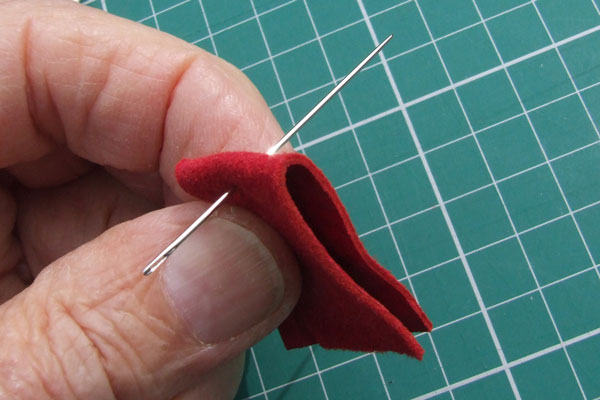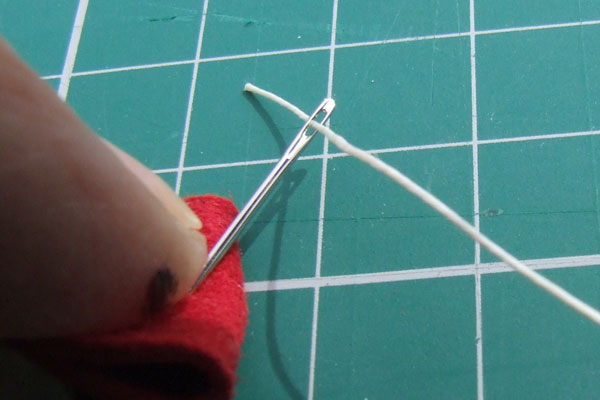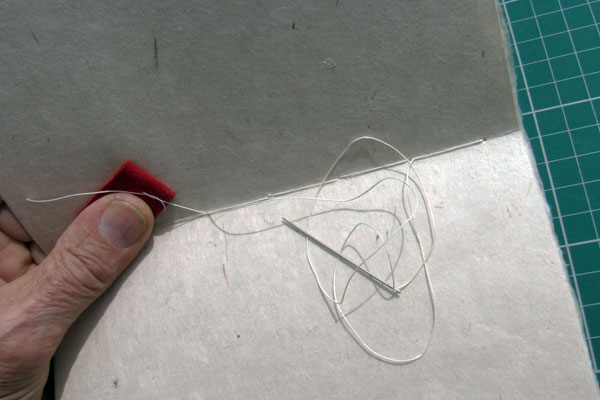
A needle saver ~ or flag ~
Here the leather is folded ~
It is usually best to leave the flag open
To save losing needles on the work bench, when I put them down, I spike them through a small scrap of brightly coloured leather ~ or felt. It also helps me to pick up the smaller needles with clumsy fingers. Readily finding ~ or identify them ~ when they they are jumbled into a tool box is useful. (Preferably into a smaller container inside the toolbox.)

When sewing ~ especially with smaller items ~ I find the leather to be a useful handle ~ to help hold the needle steady whilst threading it.

Another use for the leather strip is to help anchor the end of the thread when sewing.

In the pictures ~ above and below ~ I show a simple knot tied around the flag. This can readily be untied, later ~ but saves the thread running through. (Yes ~ I have lost both flags and needles, onto desk or floor, by rushing ahead with other tasks after sewing is finished!)
On completion of sewing the section, the threads need to be tensioned before tying the knot. It helps to have a firm hold on the thread ends ~ the leather strip helps.

In this latter case the flag also reminds me which 'end of thread' was the starter and finisher. Knowing this is important because it is vital to tension 'in the direction of the thread' ~ otherwise the paper may be torn. I always work from left to right ~ or base to head ~ and so know which way to pull the two threads. That habit is useful ~ but only if you can identify which thread end is which.
Keen viewers may spot the flecks in the paper ~ and may wish to know more. I am using a smooth handmade paper that I bought direct from the makers in Nepal. I hate the air-miles that costs ~ but it is the only way to obtain such a super (and in this case unusually smooth) ~ handmade ~ acid-free ~ strong ~ long lasting ~ completely natural product. The daphne bushes from which regenerative bark is stripped will only grow at high altitudes. Such paper has been traditionally made there for centuries ~ typically by farmers with smallholdings. The smoothness of this paper is obtained by air-drying on galvanised steel plates ~ rather than the more traditional 'in deckle' method [122241]. (Yes ~ they can only make the paper when it is not raining.)
If you have read this far then you may also be keen-eyed ~ or inquisitive ~ enough to notice that the needle in use is not very sharp. It does not need to be since the holes are already made with the 'proper tool for the job'. Notes on ~ what I call ~ blunt needles are available [125941]
